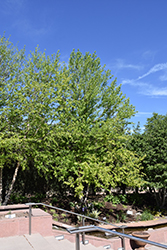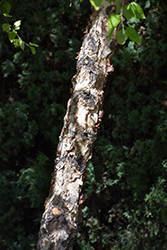Fri & Sat 8am - 8pm
Sun 8am - 7pm
Anytown, USA 12345
fax: 261.787.0463
e-mail: info@successgc.com


Plant Finder

Height: 40 feet
Spread: 30 feet
Sunlight:
![]()
![]()
Hardiness Zone: 4a
Other Names: Red Birch
Description:
A deciduous large shrub or small multi-trunked tree with many limbs sprouting from the trunk; thrives in acidic, moist to wet soils; attractive, non-peeling bark is shiny, reddish brown with white streaks; a good plant for wet areas
Ornamental Features
Water Birch has attractive dark green foliage with grayish green undersides on a tree with a round habit of growth. The serrated round leaves are highly ornamental but do not develop any appreciable fall color. It features subtle brown catkins with red overtones along the branches from early to mid spring before the leaves. The smooth brick red bark adds an interesting dimension to the landscape.
Landscape Attributes
Water Birch is a multi-stemmed deciduous tree with a more or less rounded form. Its average texture blends into the landscape, but can be balanced by one or two finer or coarser trees or shrubs for an effective composition.
This is a relatively low maintenance tree, and should only be pruned in summer after the leaves have fully developed, as it may 'bleed' sap if pruned in late winter or early spring. It is a good choice for attracting birds, bees and butterflies to your yard. Gardeners should be aware of the following characteristic(s) that may warrant special consideration;
- Insects
- Disease
Water Birch is recommended for the following landscape applications;
- Shade
- Mass Planting
- Hedges/Screening
- Naturalizing And Woodland Gardens
- Bog Gardens
Planting & Growing
Water Birch will grow to be about 40 feet tall at maturity, with a spread of 30 feet. It has a low canopy with a typical clearance of 2 feet from the ground, and should not be planted underneath power lines. It grows at a slow rate, and under ideal conditions can be expected to live for 60 years or more.
This tree does best in full sun to partial shade. It is quite adaptable, prefering to grow in average to wet conditions, and will even tolerate some standing water. This plant should not require much in the way of fertilizing once established, although it may appreciate a shot of general-purpose fertilizer from time to time early in the growing season. It is particular about its soil conditions, with a strong preference for rich, acidic soils. It is somewhat tolerant of urban pollution. Consider applying a thick mulch around the root zone over the growing season to conserve soil moisture. This species is native to parts of North America.

